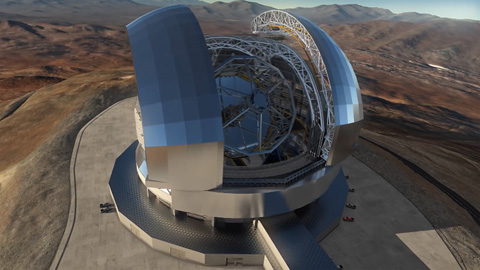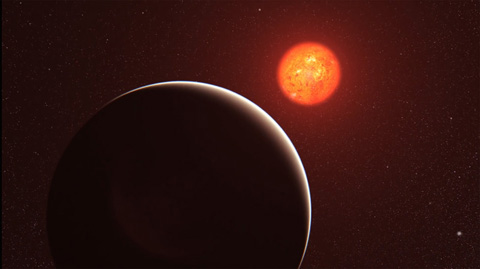The European Southern Observatory has issued the largest contract in land based astronomy to build the European Extremely Large Telescope (E-ELT) dome and telescope. Preliminary work for the construction started in 2014 by levelling the construction site in Cerro Armazones desert in Chile. The site is located at an altitude of 3,060 metres.
Optical design
The E-ELT is one of the largest astronomical projects ever undertaken. It utilizes a reflecting optical design based on mirrors consisting of five mirrors in total.
The main mirror is 39 metres in diameter and the telescope will be housed in a protective dome nearly 80 metres high. The main mirror is segmented, consisting of 798 individual elements, adding up to a surface of 39 metres across.
The faint light from distant objects will be reflected from the main mirror via the four other mirrors eventually reaching the focus of the telescope where sophisticated scientific instruments will be placed.
A suite of world class scientific instruments is already under development. The main mirror is thin and flexible; it sits in the centre of E-ELT's adaptive optics capability.

The E-ELT dome will be 80 metres high.
Adaptive optics
Adaptive optics systems flex and bend the mirror by tiny amounts and great precision to compensate for the blaring effect of Earth's atmosphere. As a result, the images of celestial objects will be 15 times sharper than the Hubble space telescope.
The enormous observation power of the E-ELT will establish it as the most powerful telescope in the world. It will be the biggest and most sophisticated telescope ever built will take us into a new era of observation astronomy.
Its magnificent engineering will support cutting edge scientific research with two unique features that set it apart from other large telescopes. It collects 15 times more light than any other optical telescope in operation today and it can also capture much sharper images.

The E-ELT will reveal new worlds.
Benefits
The E-ELT will allow scientists to study planets around other stars in unprecedented detail, learn how planets form and the conditions on their surfaces.
We may discover a planet similar to Earth or find evidence of life on another world. The distant universe will be revealed in ways never before possible.
The new telescope will help scientists to answer important questions on how the universe formed, what the future holds and study the evolution of galaxies from the earliest times.
Other areas of research include some of nature's most violent events such as how black holes accredit their material and become active galactic nebulae.
The E-ELT will help push the boundaries of astronomy, both in engineering and in science.

The condition of far away planets will be revealed.
Source: European Southern Observatory (ESO).
Related topics:
news, European Extremely Large Telescope, E-ELT



